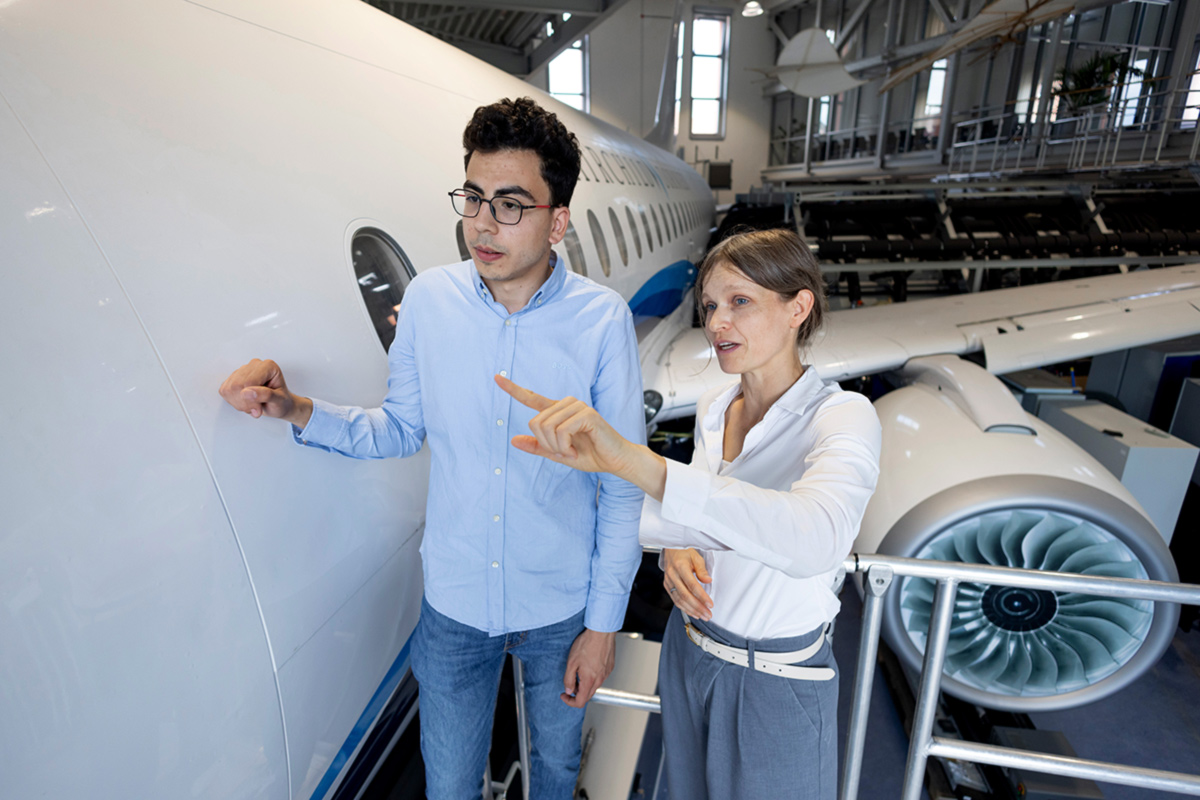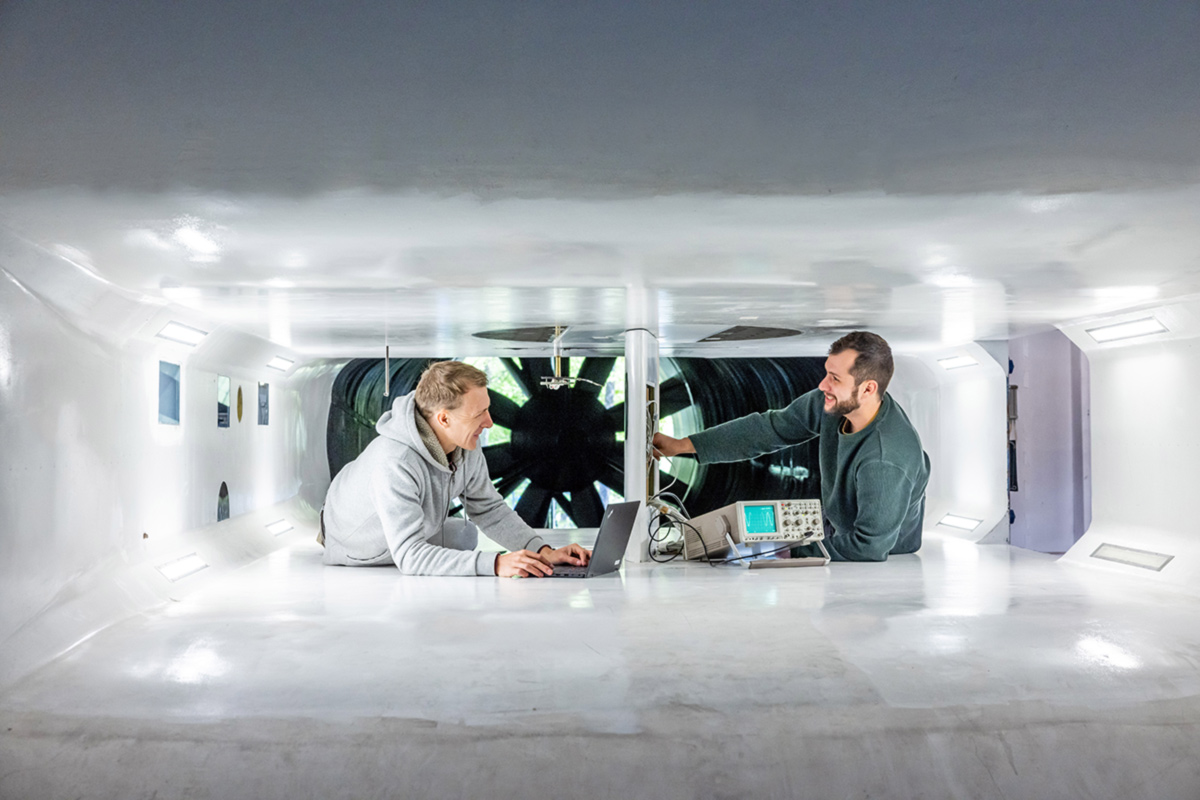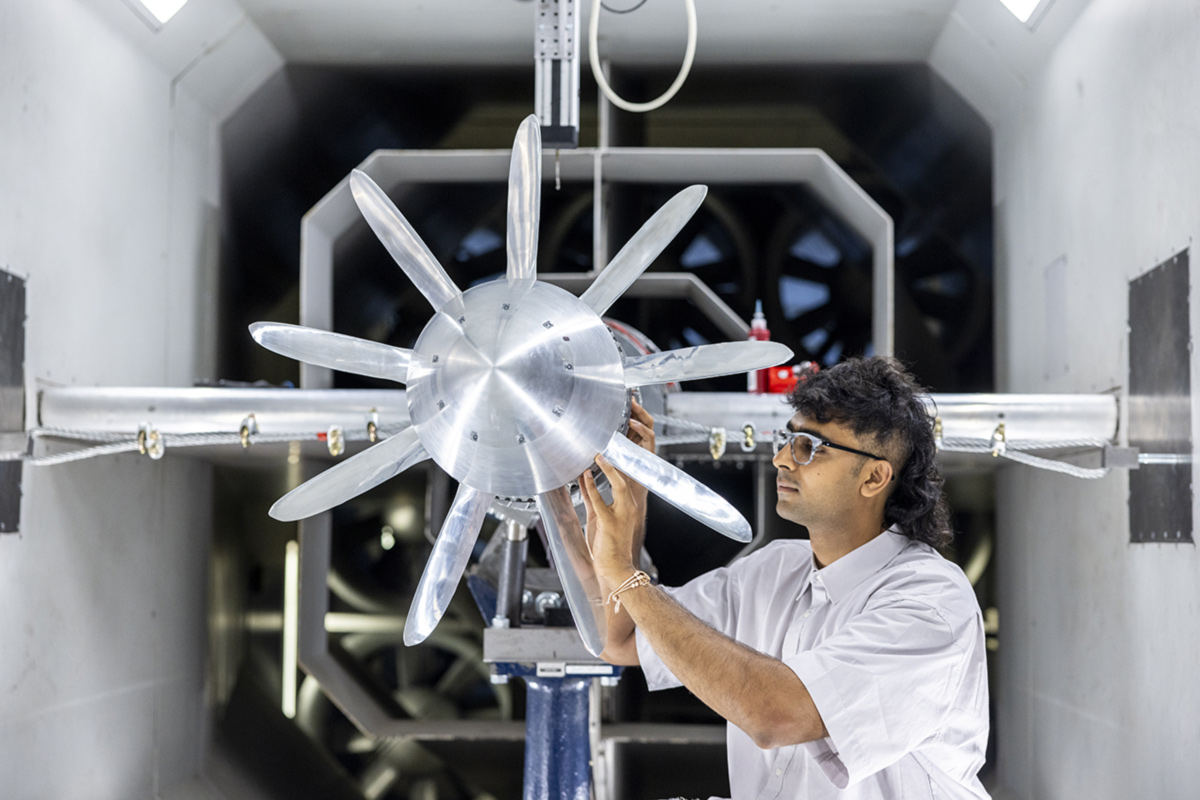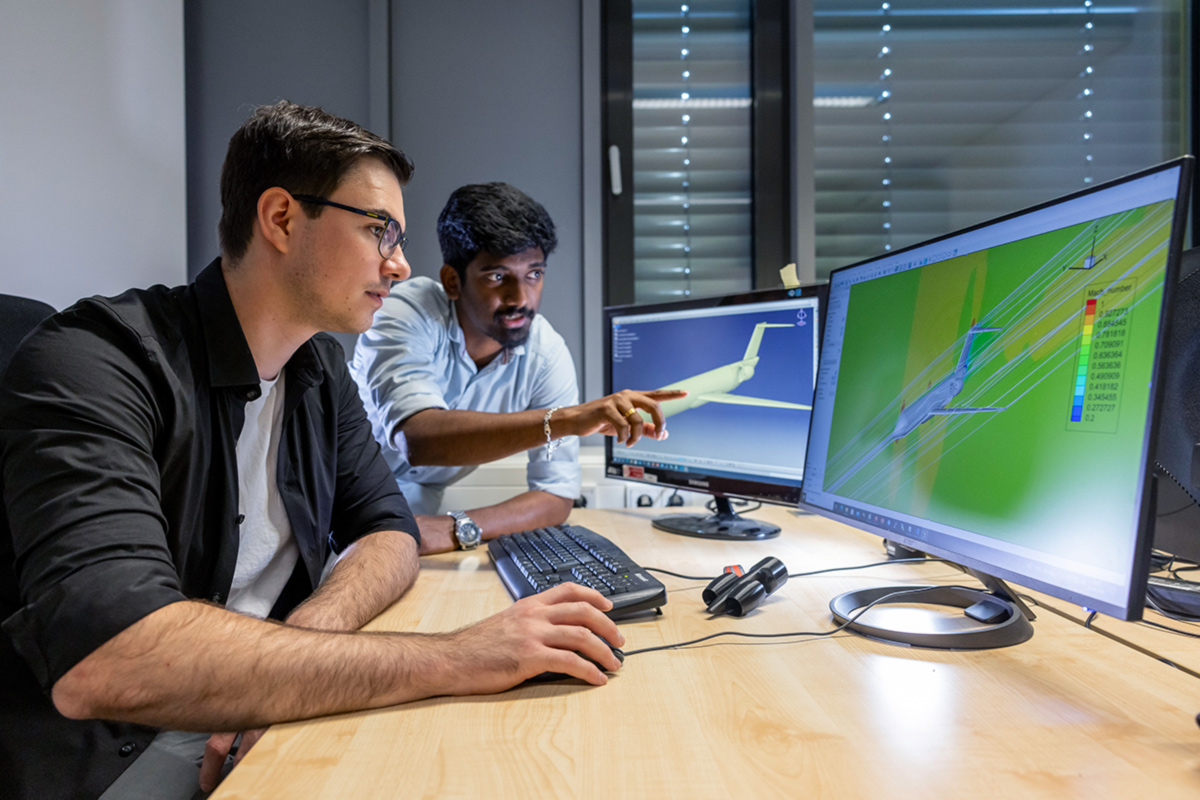B02: Exploitation of aerodynamic propeller-airframe interactions by integrated design
Project B02 focuses on the exploration of local, unsteady aerodynamic interactions between propellers and laminar wings. In order to increase the overall efficiency of an aircraft, it will be investigated whether a certain laminar run can be retained despite the propeller influence on the wing boundary layer transition. The project is based on high-fidelity CFD simulations using the DLR flow solver TAU as well as time resolved experiments in a laminar wind tunnel. By developing a surrogate model based integrated design methodology, combining multi fidelity CFD methods, the principal parameter dependencies of the propeller-wing-interactions will be identified in the first project phase. In the following phases, the propeller and the shape of a low-drag laminar wing will finally be optimized to enhance the overall efficiency.
Motivation
Propeller-wing interactions can increase the overall aircraft efficiency. However, time-varying propeller impact on wing boundary layer transition can increase the viscous drag.
- How do unsteady aerodynamic interactions between periodic blade wakes and laminar wings affect the BL behaviour and the power balance? → Validation and enhancement of CFD models
- How can an integrated design beneficially utilize the cross system propeller-wing interactions to enhance the overall aircraft efficiency? → swirl recovery, lift increase, separation delay, BL transition
Objective
Investigation of the propeller impact on the BL of laminar wings and it’s consideration in integrated design (cross-system).
- Investigation of boundary layer transition due to tractor propeller in front of a laminar wing (config. 2a, DP)
- First time modelling of blade wake driven transition with CFD
- Identification of principal parameter dependencies via surrogate model
Approach
The project adopts a dual approach, combining numerical simulations and experimental tests in the IAG Laminar Wind Tunnel (LWT).
The investigation into propeller-laminar wing interactions includes CFD studies employing fully resolved propellers and Actuator-Line (ACL) models, coupled with local correlation-based transition models (γ-ReΘ, DLR-γ). Complementing these analyses are wind tunnel measurements characterized by high spatial and temporal resolution. Additionally, research focuses on improving tip vortex resolution (AZDES) and assessing boundary layer impact (IDDES) using DES methods.
Power balance analysis is conducted to quantify dissipation sources and power gains, specifically examining numerical dissipation within the propeller slipstream.
In the realm of integrated design methodology, a variable-fidelity surrogate model is developed. This model, incorporating Algebraic Stress Model (RANS) and Actuator-Line (URANS) methods, explores the effects of design parameters like blade count, advance ratio, and propeller position, while also considering boundary layer transition effects with validated models. The resulting response surface serves as valuable output for aircraft design.
Role in SynTrac
2.5D aerodynamics
- Prop-Wing response surface
- Adapted transition model
- Experimental data
- Propeller design













